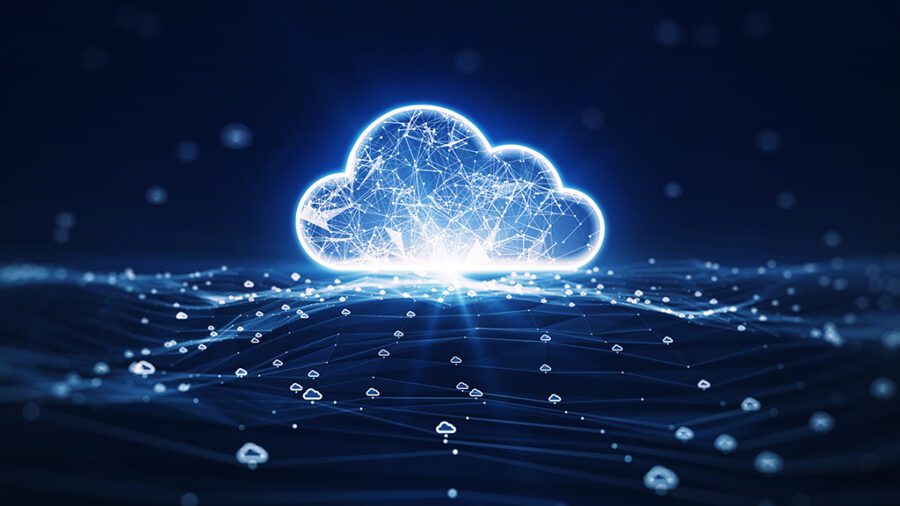
Cloud technology is essential for businesses nowadays. Some benefits of cloud computing include:
- Scaling of the company resources with a service-based model — depending on the needs and growth of your business
- Accessibility of the infrastructure that enables you and remote workers to connect to from different parts of the world
- Delegating responsibility of the managing of infrastructure to cloud providers — to a certain extent
- Adding more space and new parts of the infrastructure for a low cost — compared to the traditional on-premise structures and data centers
Remote availability of cloud technology also creates opportunities for hackers who are looking for the weaknesses in systems they can exploit and breach organizations.
The cloud is especially vulnerable during cloud migration. In this process, existing systems need to be relocated to the cloud environment, either partially or completely. IT teams might have to alter existing systems such as apps in their entirety to adjust them for the cloud application. If this is your first time migrating to the cloud, the process raises a lot of questions.
Which parts of your system must be protected against a potential cyber breach amid cloud migration?
Who is responsible for the cybersecurity of the cloud?
How can you secure the cloud during migration?
How do you make sure that your organization is safe post-migration?
Who is Responsible for Cloud Security?
Both cloud providers and companies that use their services have to make sure that their resources are protected. Therefore, cloud security is a shared responsibility. This shared responsibility model means that cloud vendors are obliged to offer secure services. Most providers already have (or should implement) a basic layer of security that protects your data and network of the cloud.
Basic tools cover protection against the threats that are known issues in the cloud environment. As hacking gets more sophisticated and new attack methods and techniques appear, the vendors have to keep up with them.
What about security during the cloud migration?
Considering that their IT teams are in most cases responsible for cloud migration, companies heavily rely on them and trust they’ll keep the cloud safe during this process. Following the migration, the responsibility to keep cloud security is heavily placed on the organization that purchased and uses the services. This is because their customers, clients, and employees trust them with data that is circulating in the cloud. Depending on the cloud technology used, they have to ensure that sensitive data is secure.
Businesses, on the other hand, have to meet all the regulations of cloud vendors. This can get tricky if they use the services of different vendors that require varied compliance. For IT teams that manage security, it means that they have to keep up with any changes that these vendors might request for their individual systems.
What Has to Be Secured Amid Cloud Migration?
During cloud migration, it’s important to secure:
- The infrastructure of the cloud can be increased because it works as a service — including cloud storage and networking resources
- Data that is being transferred from the old infrastructure as well as the new data that is being introduced to the cloud
- Identity of the clients, employees, and anyone that has access to the cloud
Infrastructure can be protected with tools that regulate malicious traffic and encrypts traffic to keep it secret, such as a firewall.
Data can be protected with encryption tools as well as with access restriction that requires at the very least a two-step authentication process. Similar to data protection in general, proper authentication and strong credentials for logging into the system can also protect the identity of the people who use the cloud.

How to Protect the Cloud After Migration?
Once you have all the systems that you want in the cloud environment, it’s time to protect them.
A cloud environment is rapidly changing, and it can get modified in minutes. For cybersecurity, this means you might have new vulnerabilities after regular updates of the cloud, or new logins from your employees.
To prevent incidents such as data breaches on the cloud:
- Set up layered security systems that protect all the cloud-base technology that you use
- Have an IT team to maintain the cloud environments
- Make sure that the attack surface (everything that can be hacked) is regularly scanned for the possible threats, and that the data after the discovery is analyzed
- Follow up the scanning and analysis with the mitigation of vulnerabilities and threats in your network
- Test the tools you have to protect your cloud as well as the people who manage your security
To ensure that you’re constantly up to speed with the changes in the cloud environment, repeat the process of threat discovery and mitigation of flaws within the cloud.
Companies that have complex structures also employ versatile automated solutions that test and mitigate threats in the cloud. Some of them even use machine learning to generate forensic reports of your security and list all the high-risk threats to make sure that they are discovered and removed early.
Conclusion
Cloud technology has many perks, and it has been enabling businesses to grow and even stay afloat amid the first waves of a global pandemic.
However, it has to be protected and regularly scanned for any vulnerabilities that could turn into incidents in the cloud environment. Many think about the cybersecurity of the cloud once the infrastructure that they used to have is completely or partially replaced with cloud solutions. However, at this point, it can be all too late.
Cybercriminals have constantly changing techniques, and they’re constantly on the lookout for any flaws in your systems to attack. The cloud can be the target of hacking attempts during its most vulnerable state — cloud migration. Make sure that you protect your cloud during and after the migration to the cloud.
